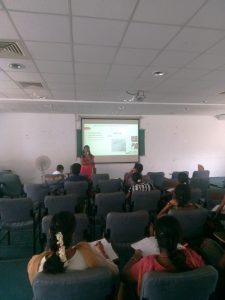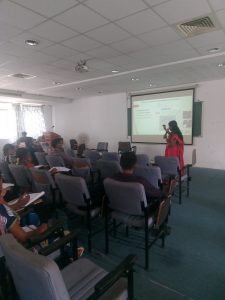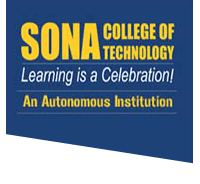Date/Time
Date(s) - 14/09/2018
11:00 am - 1:00 pm
Location
CV Raman Hall, Sona College of Technology, Salem
Categories
Guest lecture was delivered to students on the topic of “Introduction to microwave radar sensing and its applications” on 14.9.18. The talk was arranged for Second year Civil engineering students in C.V.Raman Hall, from 11.00 A.M-1.00 P.M.
The resource person for the guest lecture was Dr.Shoba, Research Assistant Professor, SRM Institute of Science and Technology. Around 68 students attended the seminar along with 2 staff members. The workshop is started with introduction of Chief Guest by Dr.Gulshan Taj, Academic coordinator. Guest lecture started with basic introduction about remote sensing and its definition in different perspective. Different sensing methods like optical, thermal and microwave radar sensing is explained along with the basic principles. Definition about azimuth and range of microwaves are explained with neat sketches. Different satellites launched for extracting information about earth are explained with more emphasis on RISAT satellite using C band. Different bands in microwaves and their proper usage for different applications is explained. Principle of mircowave remote sensing with backscattering is shown with appropriate sketches. False color composites is explained for different feature details such as vegetation, river, and other bodies in earth. Various reflectors used in sensing operations are explained in detail along with detail introduction about interferometry. Various techniques like altimetry, polarimetry, scatterometry and interferometry are told in detail with proper usage in different application areas. Finally scope of different projects in this area are listed out.
A student report on the talk stated that “Remote sensing is the emerging area of Civil Engineering in terms of more opportunities and gave an insight about its principles and its application to Civil Engineering. It also shed light on different project areas that can be taken by students as part of their academic projects”.




